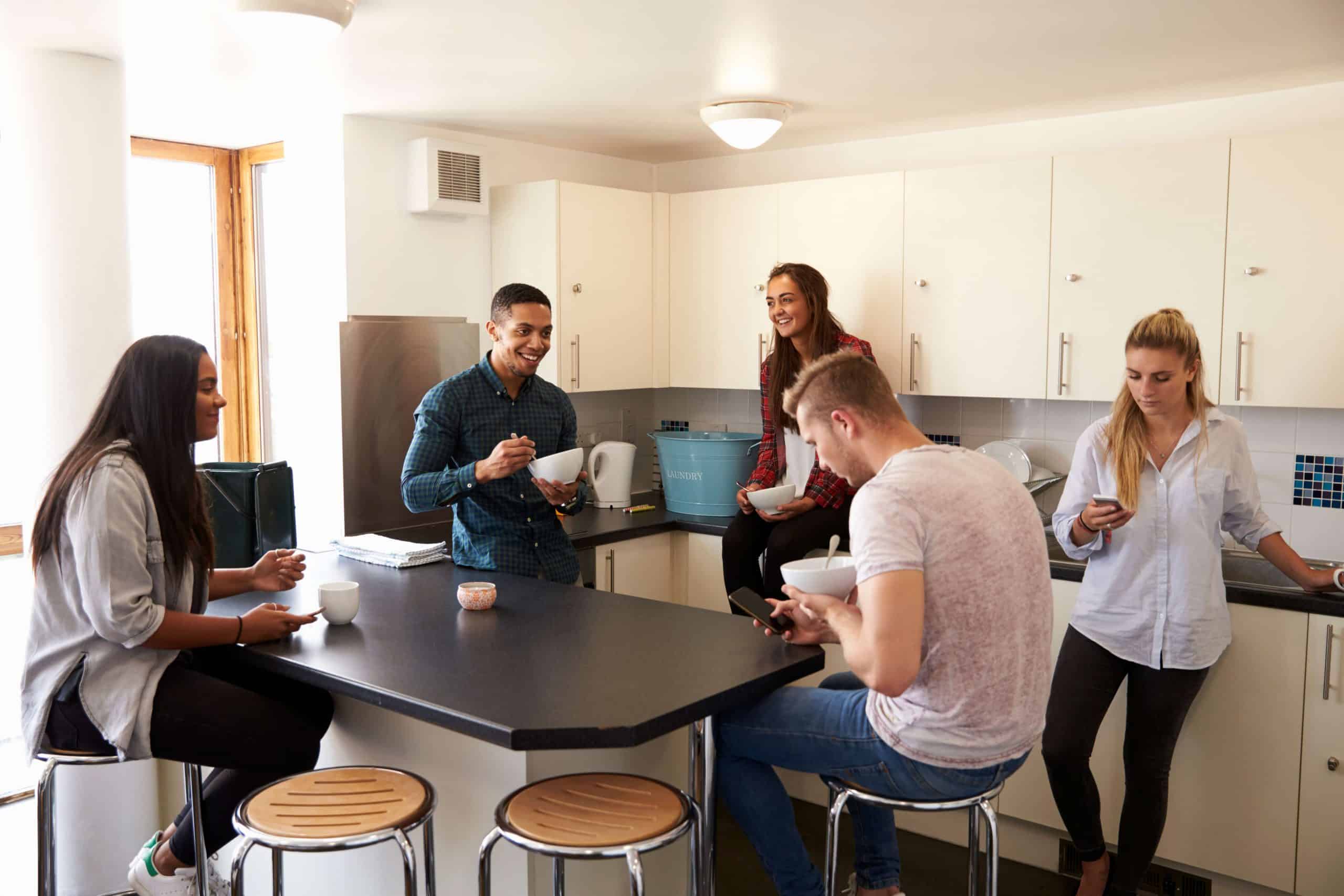The concept of student housing has evolved significantly over the years, shifting from traditional dormitories and shared apartments to more innovative solutions. Today, co-living spaces are emerging as a popular trend in student housing, offering unique benefits and experiences. These modern living arrangements are reshaping how students interact, study, and live during their college years.
In a time when college life is more dynamic than ever, balancing studying, assignments, and social activities can be challenging. Co-living spaces cater to these multifaceted needs, providing a blend of private and communal living. For students burdened with heavy workloads, professional paper writing services that can effortlessly write my essay for me can serve as a lifeline, freeing up time to enjoy the benefits of co-living communities.
Understanding Co-Living Spaces
What Are Co-Living Spaces?
Co-living spaces are innovative housing solutions that blend private living quarters with shared communal areas. These spaces are typically inclusive of kitchens, lounges, and study rooms that are shared among residents. Designed to enhance the sense of community, they are often fully furnished and include essential utilities and amenities in the rent. This arrangement simplifies the living experience for students, removing the hassle of dealing with multiple bills and furnishing expenses.
Tailored for Student Needs
These living arrangements are specifically designed to cater to the unique requirements of student life. They provide a blend of privacy and community, ideal for those looking for a balance between social interaction and personal space. Co-living spaces are particularly appealing to students who are new to an area and looking to build a network in a supportive living environment.
The Benefits of Co-Living
The benefits of co-living spaces for students are numerous and varied:
Community Building: These environments are conducive to forming strong connections. By living in close proximity and sharing common areas, students naturally engage with each other, fostering a sense of belonging and community.
Convenience: With fully furnished rooms and common areas, along with inclusive amenities such as high-speed Wi-Fi and laundry facilities, co-living removes the stress of setting up and maintaining a household.
Cost-Effectiveness: The all-inclusive nature of co-living spaces simplifies budgeting. It often includes utilities, internet, and other services in the rent, reducing the worry about unexpected costs.
The Design of Co-Living Spaces
Focus on Functionality and Aesthetics
The architecture and interior design of co-living spaces focus on combining functionality with style. These spaces are often outfitted with modern, stylish furnishings that are both comfortable and efficient, designed to maximise the available space. The aim is to create environments that are not only practical for studying and living but also visually appealing and welcoming. Attention to detail in design ensures that these spaces are not just functional but also cater to the aesthetic needs and comfort of students.
Integrating Technology
Advanced technology is a key feature in co-living spaces, significantly enhancing the residential experience. This can include high-speed internet essential for studying and entertainment, smart home features for comfort and security, and digital platforms that facilitate community engagement, event planning, and management of the living space. These tech enhancements are strategically integrated to boost efficiency, connectivity, and the overall living standard for those residing in these spaces.
Co-Living and Student Life
Balancing Privacy and Community
A significant aspect of co-living is how it expertly balances private and communal living. Students have their individual spaces, ensuring privacy for study and rest, while shared areas provide a platform for social interaction and group activities. This balance is crucial for holistic student development, catering to both academic and social needs. It perfectly melds the need for solitude with the human desire for connection and camaraderie.
Enhancing the Academic Experience
Co-living spaces can have a profound impact on students’ academic life. Featuring shared study areas, co-living spaces create a supportive environment that is ideal for both learning and collaborative efforts. The support and motivation from a community of peers can significantly enhance the overall academic experience, helping students to thrive. These collaborative environments foster a culture of shared learning and intellectual growth, which is crucial for academic success.
The Social Aspect of Co-Living
Building Lasting Connections
Co-living environments are ideal for creating strong, lasting connections. Inhabitants of these co-living spaces get the chance to interact with people from a wide array of backgrounds, contributing to a community that is both diverse and inclusive. These connections often last beyond college years, laying the foundation for professional networks and friendships that can last a lifetime. This diversity enriches the living experience, providing a microcosm of the larger world in a shared living space.
Organised Events and Activities
To further bolster the sense of community, many co-living spaces actively organise events and activities. These can range from academic-focused group study sessions to recreational and social outings, providing a balanced and enriched college experience. These organised events and activities offer a welcome change from routine study, promoting interaction among students in an enjoyable and relaxed atmosphere. These events are thoughtfully organised to appeal to a broad spectrum of interests, ensuring there is something engaging for every resident.
Conclusion
Innovative co-living spaces are redefining student housing by offering environments that are conducive to both academic success and social growth. These spaces blend the comforts of home with the benefits of a community, making them an attractive option for college students. As students navigate their academic journey, resources such as the best Python assignment help websites or services for writing literature essays can offer additional support, akin to what co-living spaces provide in the realm of student housing. Co-living stands as a testament to the evolving needs and preferences of today’s students, representing the future of college living.











